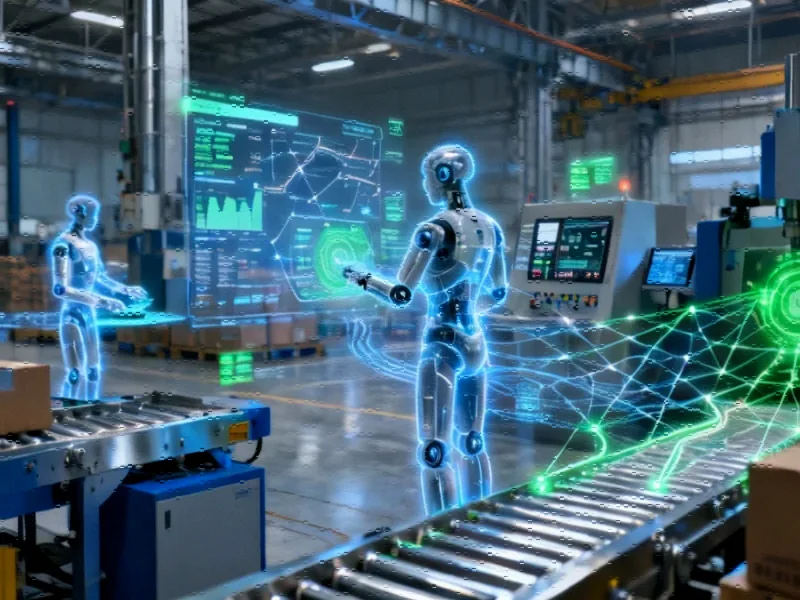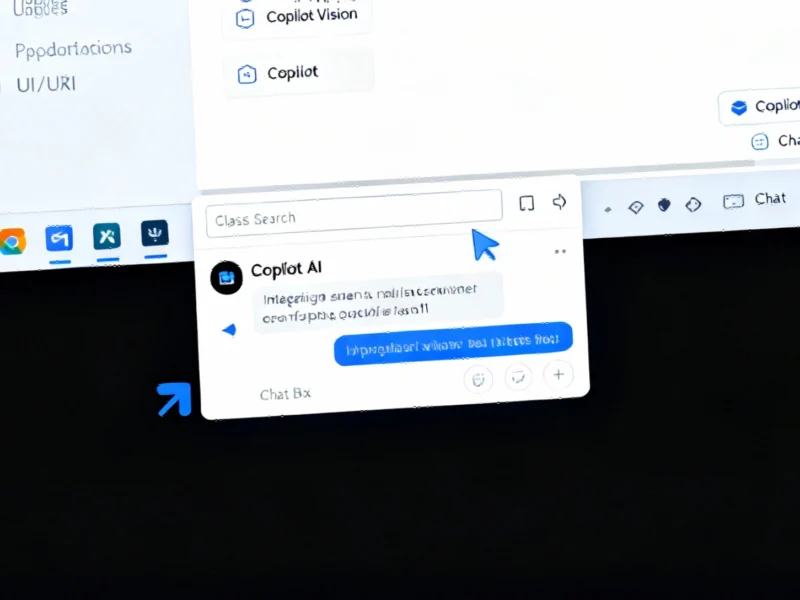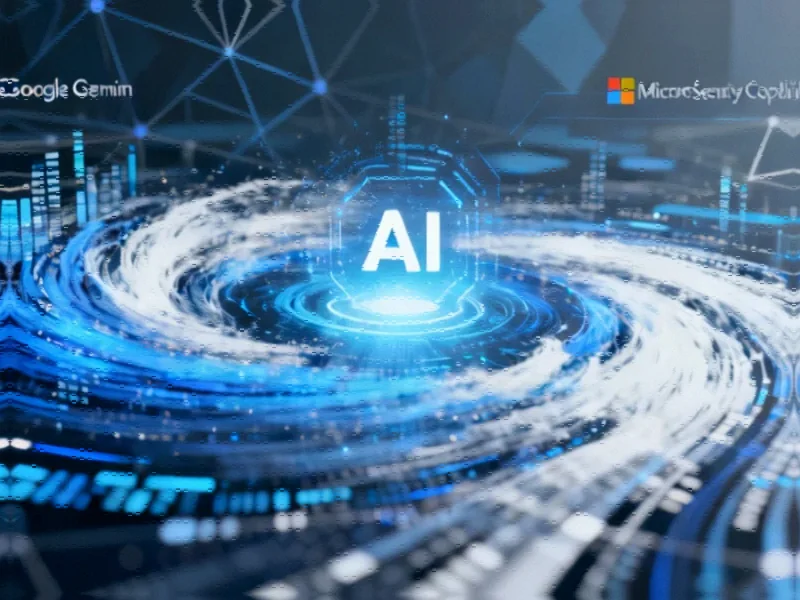The Convergence of Enterprise and Operational AI
Industrial automation is undergoing a fundamental transformation as artificial intelligence moves from corporate boardrooms to factory floors. What began as enterprise AI optimizing business systems like ERP and supply chain management is now converging with operational AI – the intelligent systems that monitor, control, and optimize physical processes in manufacturing, logistics, energy, and critical infrastructure. This convergence represents more than just smarter factories; it signals the emergence of truly intelligent enterprises capable of unprecedented resilience and agility.
Imagine manufacturing facilities that autonomously reconfigure production in response to demand shifts, logistics networks that self-correct around disruptions, and infrastructure systems that predict maintenance needs before failures occur. These capabilities depend on AI agents that span both enterprise planning and operational execution, compressing decision cycles from days to minutes while transforming workforces from simple executors to strategic overseers.
The Persistent OT-IT Challenge
Realizing this vision requires overcoming one of industry’s most persistent technical barriers: the OT-IT gap. Operational technology systems operate in physically demanding environments – not climate-controlled data centers – and must deliver deterministic, real-time performance while withstanding extreme temperatures, vibration, and challenging conditions. These systems support mission-critical applications with strict requirements for safety, resilience, and security, often without traditional IT support.
The fundamental differences between OT and IT systems create what many describe as a chasm rather than a gap. OT systems are not scaled-down IT systems, and attempts to bridge this divide through oversimplification or standardization have consistently fallen short. The diversity and specialization inherent in OT systems require unique hardware implementations and software architectures that respect their operational constraints.
Recent industrial AI integration bridges critical technology gaps through innovative approaches that maintain domain boundaries while enabling secure information exchange.
Modernizing Integration Strategies
The solution lies not in forcing convergence but in applying proven software architectural concepts – platform-based design, event-driven interfaces, and software abstraction. The challenge is embracing OT diversity while enabling simple, efficient, scalable interoperability with enterprise IT systems. This represents a crucial mindset shift from IoT-centric to AI-centric operational technology.
Bridging the OT-IT gap is no longer merely about connecting IoT devices to dashboards. It has become a strategic enabler for unifying enterprise and operational AI at scale. Organizations are working to deploy AI workloads across a continuum of environments spanning clouds, regional data centers, on-premises infrastructure, and OT edge systems. However, this continuum traditionally breaks at the OT discontinuity.
Architectural Principles for AI-First Integration
Successful integration requires a secure, composable, AI-first continuum that extends from cloud to physical infrastructure without hardcoded translation layers or architectural dead ends. Four core architectural principles support this vision:
Commercial Off-the-Shelf OT Platforms: The embedded industry is shifting from whole-stack customization to commercial off-the-shelf platforms combining OT-ready hardware with vendor-supported system software. These platforms allow development teams to focus on application logic rather than system-level coding, accelerating innovation while reducing technical debt.
Component-Based Architecture: On capable OT platforms, developers can assemble applications from loosely coupled, hardware-agnostic components that are simpler to develop, test, update, and maintain. This approach reduces architectural complexity and enables independent updates of AI models and control logic at the edge.
Event-Driven Interfaces: Traditional architectures relying on request-response APIs or periodic polling introduce latency and complexity. Event-driven interfaces enable asynchronous, loosely coupled communication that supports real-time responsiveness and improves integration flexibility – crucial for cyber-physical systems where physical world signals trigger intelligent decisions.
AI-Native Data Strategy: This involves designing data flows and processing capabilities specifically for AI workloads, ensuring that information moves efficiently between operational and enterprise domains while maintaining context and quality.
Security Considerations in Converged Environments
As AI systems span traditional boundaries, AI agent security emerges as a shared responsibility between operational and information technology teams. The integration of physical and digital systems creates new attack surfaces that require coordinated defense strategies spanning both domains.
Recent developments in security technology, including how Google’s Gemini and Microsoft’s Security Copilot are addressing these challenges, demonstrate the industry’s recognition of the unique security requirements in converged OT-IT environments.
The Business Impact and Future Outlook
The convergence of enterprise and operational AI represents more than a technical achievement – it delivers tangible business value through increased efficiency, reduced downtime, and enhanced decision-making capabilities. Companies successfully implementing these strategies report significant improvements in operational resilience and agility.
These transformations are part of broader market trends driving digital transformation across industrial sectors. As organizations continue to navigate economic pressures, the ability to leverage AI across both enterprise and operational domains becomes increasingly critical for maintaining competitive advantage.
The journey toward truly intelligent enterprises is well underway, with AI agents increasingly clocking in on factory floors worldwide. By adopting architectural approaches that respect domain boundaries while enabling intelligent coordination, organizations can unlock the full potential of both enterprise and operational AI – creating systems that are not just connected, but truly intelligent.
This article aggregates information from publicly available sources. All trademarks and copyrights belong to their respective owners.
Note: Featured image is for illustrative purposes only and does not represent any specific product, service, or entity mentioned in this article.



